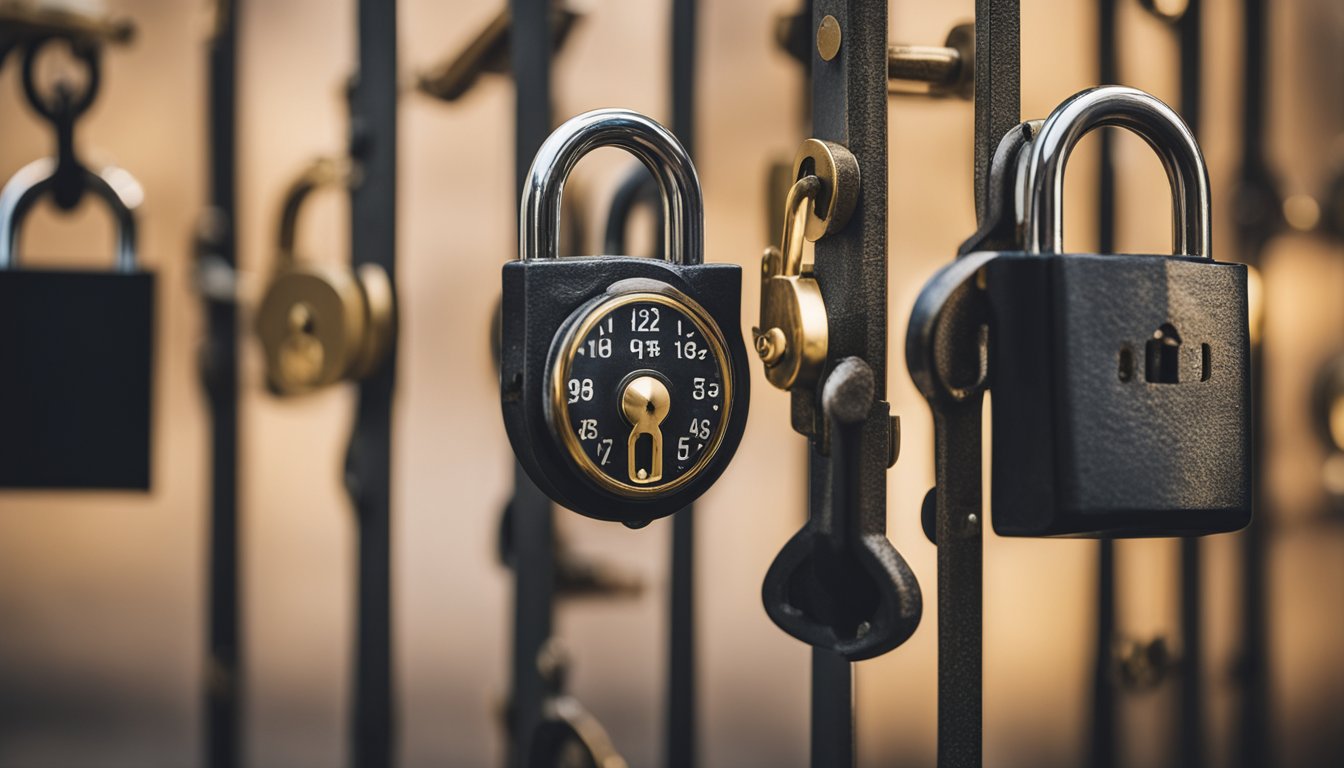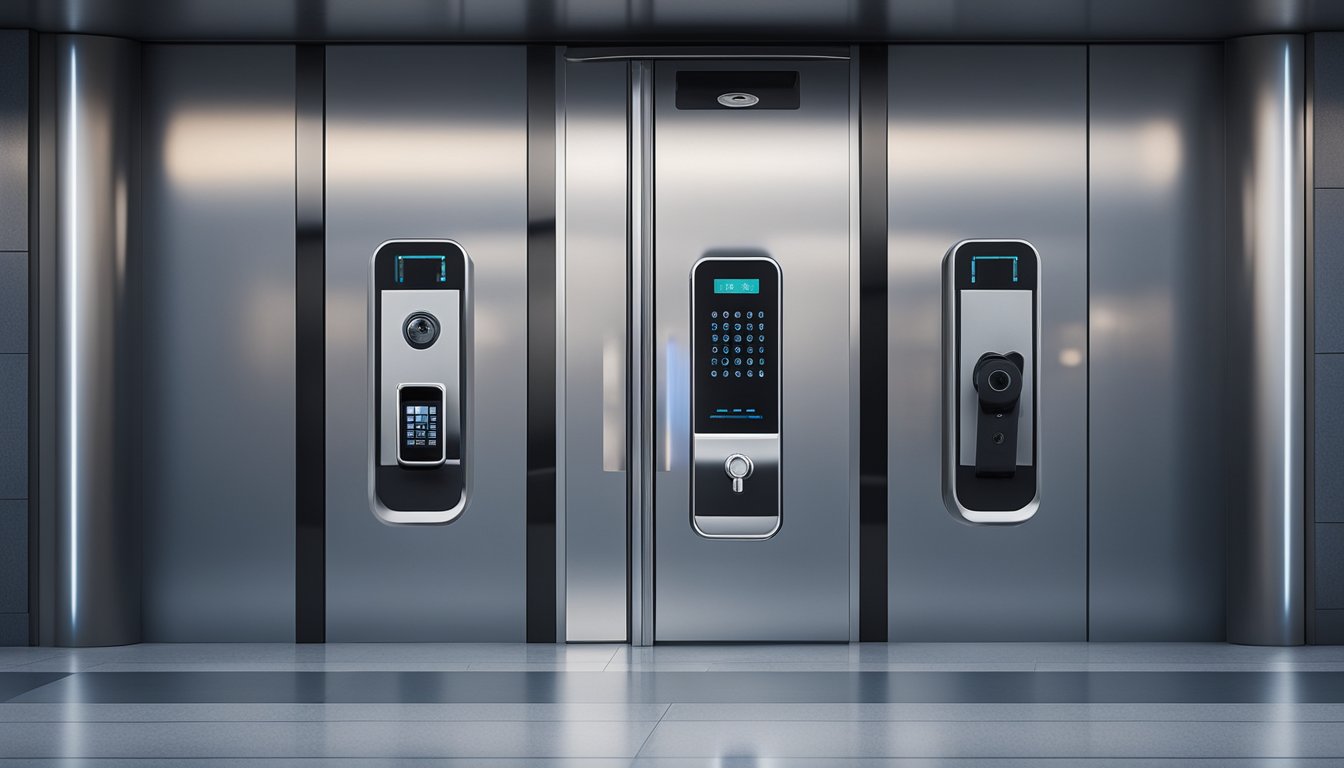Late updated: 28 Jun 2024 14:06
Written by: Elena Prescott
The Evolution of Lock Technology: A Comprehensive History and Future Trends
Lock technology has been an integral part of human history, safeguarding our possessions, homes, and even our secrets. Starting from the simple wooden pin locks of ancient Egypt, which served the Egyptians as their primary means of security, lock mechanisms have undergone significant transformations. The evolution of lock technology spans thousands of years, reflecting advancements in materials, design, and the relentless pursuit of better security solutions.

Today, we witness an era where locks have transcended their traditional forms, thanks to breakthroughs in electronics and smart technology. This fascinating journey from crude mechanical designs to sophisticated digital systems not only highlights our innovative spirit but also underscores the growing importance of security in our lives. Whether it's the programmable keycard locks revolutionising the hospitality industry or state-of-the-art smart locks enhancing home security, each innovation builds on the legacy of its predecessors.
Understanding this evolution provides us with a unique perspective on how far we've come and what might lie ahead in lock technology. By exploring the milestones in the development of locks—from ancient mechanisms to modern innovations—we gain valuable insights into how these changes impact our daily lives.
Key Takeaways
- Lock technology has evolved significantly over thousands of years.
- Ancient Egyptians used wooden pin locks as one of the first security mechanisms.
- Modern innovations in lock technology include electronic and smart locks.
Historical Evolution of Locks
Lock technology has undergone substantial changes, tracing its origins back to ancient times and evolving through various eras until reaching modern sophistication. Key milestones include early wooden mechanisms, significant advancements during the Industrial Revolution, and innovative developments in the 20th century.
Origins in Ancient Civilisations
The story of locks begins over 4,000 years ago in ancient Egypt. Here, the earliest known locks were crafted from wood and operated using a rudimentary pin tumbler system. These wooden locks utilised a bolt, a key, and pins, with the key resembling a wooden stick with pegs tailored to the lock's pins.
In Mesopotamia, similar wooden mechanisms were also in use. The Palace of Khorsabad boasted early locking mechanisms featuring simple, yet ingenious, designs aimed at securing entries. These early inventions laid the foundation for more complex lock technologies that would develop over centuries.
Advancements Through the Ages
As we moved into the Roman era and the Middle Ages, lock technology saw considerable advancements. The Romans developed the warded lock, which utilised wards or obstructions inside the lock that prevented the lock from opening unless the correct key was used. These locks were often made from iron or brass.
During the Middle Ages, the lever tumbler lock was introduced. This type of lock included a complex arrangement of levers that needed to be lifted to precise heights by the key, allowing the bolt to move. Metalworking techniques improved, and the materials used in lock construction became more robust and reliable.
The Leap in the Industrial Revolution
The Industrial Revolution marked a significant leap in lock technology. Mass production techniques enabled a rapid proliferation of advanced locks. Linus Yale Sr. revamped the ancient Egyptian pin and tumbler lock design by introducing a smaller and more efficient version.
Joseph Bramah’s all-metal lock design circa 1784 and James Sargent's invention of the first combination lock brought about radical innovations. Bramah's lock used a cylindrical key with precise cuts, while Sargent's integrated a time-based mechanism, setting new standards for security in banking and commercial applications.
The 20th Century: A Turning Point
The 20th century signified a major turning point in lock evolution with the advent of electronic and digital technologies. Traditional mechanical locks still found widespread use, but innovations led to the development of more sophisticated security systems. The Yale lock, building on Linus Yale Jr.'s design, became a household standard.
Biometric and smart locks entered the market, employing fingerprints, RFID cards, and Bluetooth for accessing locks. These advancements have significantly enhanced security by integrating technology with physical locking mechanisms, ensuring our premises and possessions are more secure than ever before.
This journey from ancient wooden designs to modern digital systems underscores the continuous quest for better, more reliable security solutions through the ages.
Modern Innovations in Lock Technology

As we progress into the digital age, lock technology has transcended beyond traditional mechanical constraints, integrating advanced electronic and smart systems. These modern innovations cater to both security needs and convenience, offering multiple forms of access control and monitoring.
Rising Above Mechanical Constraints
Traditional locks have limitations that mechanical engineering alone cannot address. With the advent of electronic and smart locks, we see solutions like keyless entry systems and electronic keycard locks, which drastically reduce the risk of lock-picking and bumping.
These digital locks often incorporate biometric authentication, such as fingerprint and facial recognition, ensuring only authorised users can gain entry. Unlike traditional locks, smart locks can be programmed to allow temporary access codes, making it easy to manage access for guests or service providers.
Smart locks also offer remote access through smartphone apps. This allows users to lock or unlock doors from anywhere, receive real-time alerts on entry and exit activities, and even monitor access history. The blend of convenience and enhanced security these features provide is unmatched by simple mechanical locks.
Digital and Smart Lock Emergence
With the Internet of Things (IoT) revolution, smart lock systems have become integral to home automation. These systems often use Bluetooth or WiFi networks to connect with the broader smart home ecosystem, facilitating seamless integration with other devices. For instance, a smart lock can trigger smart lighting or adjust the thermostat when the door is unlocked.
Advanced smart locks employ data encryption to protect against cyber threats, ensuring that transmitted information remains secure. Artificial intelligence further enhances security by recognising unusual access patterns and sending alerts for potential breaches.
Our smart lock systems offer unparalleled evolving security solutions, including the ability to revoke access instantly, provide real-time monitoring, and set up regional restrictions. The convenience of integrating with voice-activated assistants and using automation to handle regular locking schedules epitomises the technological evolution in lock security.
With these innovations, modern lock technology offers heightened security, flexibility, and control, enabling us to adapt to the ever-changing landscape of security threats efficiently.
Frequently Asked Questions

Our exploration of locking mechanisms delves into advancements over time, key inventors, and significant milestones in lock technology. We also examine the influence of digital innovation on modern security.
How have locking mechanisms advanced over time?
Locking mechanisms have evolved from the simple wooden pin and tumbler locks of ancient Egypt to the sophisticated electronic and biometric systems we use today. Each era has contributed to innovations that improve both the complexity and security of locks.
Who is credited with the invention of the contemporary lock?
Linus Yale Jr. is often credited with creating the modern pin tumbler lock in the mid-19th century. His improvements are foundational to many locks still in use today.
Which lock design is considered the precursor to modern security devices?
The pin tumbler lock, first used in ancient Egypt and later refined by Linus Yale Jr., is considered the precursor to many modern security devices. Its fundamental principles remain integral to contemporary locking mechanisms.
In what year was the initial electronic locking system introduced?
The first electronic locking system was introduced in the 1970s. These early systems paved the way for more advanced digital and biometric locks, which are now commonplace in various security applications.
What significant milestones have marked the progression of lock technology?
Key milestones include the development of the wooden pin lock in ancient Egypt, the metal warded lock during the Roman era, the pivot to pin tumbler locks in the 19th century, and the advent of electronic and smart locks in the late 20th and early 21st centuries.
How has digital innovation influenced lock security in recent years?
Digital innovation has brought about significant enhancements in lock security. Features such as keyless entry, remote access, integration with smart home systems, and advanced encryption algorithms have revolutionised how we protect our homes and businesses. These advancements offer both convenience and increased security.
